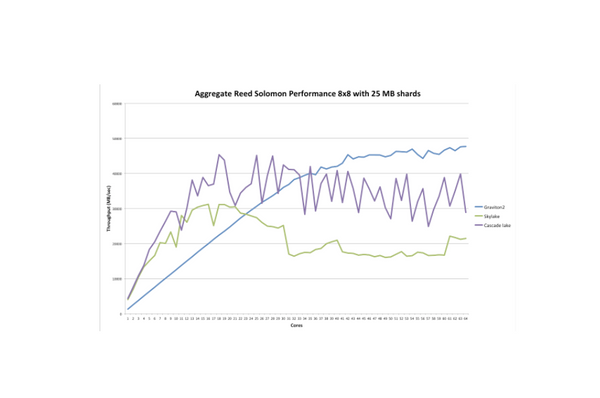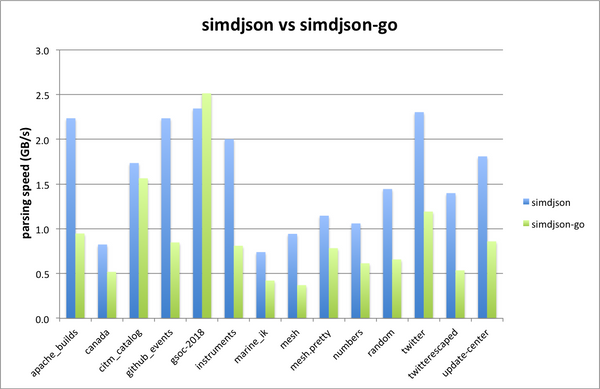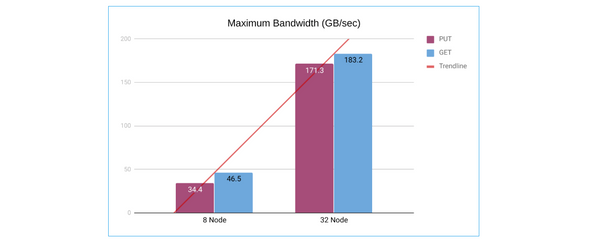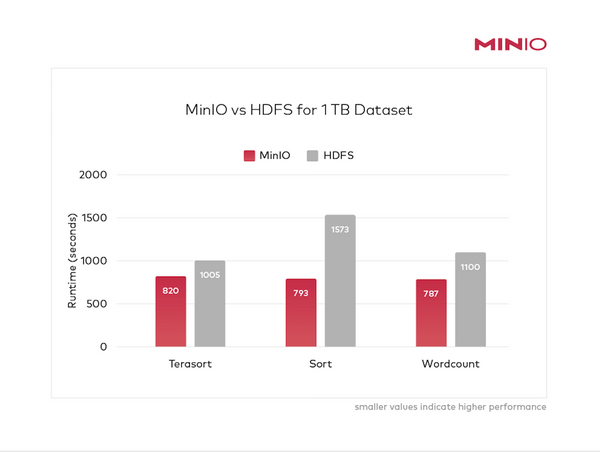Benchmarking AIStor with WARP and Perf test

MinIO is the fastest object storage available, but how do you know that underlying infrastructure is free from bottlenecks?
Read moreA collection of 25 posts tagged with "Benchmarks"

MinIO is the fastest object storage available, but how do you know that underlying infrastructure is free from bottlenecks?
Read more
One of the reasons that MinIO is so performant is that we do the granular work that others will not or cannot. From SIMD acceleration to the AVX-512 optimizations we have done the hard stuff. Recent developments for the ARM CPU architecture, in particular Scalable Vector Extensions (SVE), presented us with the opportunity to deliver significant performance and efficiency gains
Read more
A MinIO cluster operates as a uniform cluster. This means that any request must be seamlessly handled by any server. As a consequence, servers need to coordinate between themselves. This has so far been handled with traditional HTTP RPC requests - and this has served us well. Whenever server A would like to call server B an HTTP request would
Read more
Confluent, Intel and MinIO conducted benchmarking and certification testing for MinIO Tiered Object Storage for Kafka storage. This blog post describes the observations and results of testing MinIO object storage as a backend for the tiered storage feature of Confluent Platform 7.1.0 on servers equipped with third generation Intel Xeon Scalable processors. The scope of these tests was
Read more
MinIO Jumbo improved backup performance by 15x using parallel uploads.
Read more
Learn how to troubleshoot object storage performance with low level system component testing.
Read more
88 GB/s writes in a 2U form factor for on-prem, colo and edge object storage.
Read more
The answer to the burning question you always wanted to ask - how does erasure coding utilize CPU?
Read more
The Supermicro GrandTwin™ SuperServer is a solid, well-designed NVMe class hardware that we recommend for MinIO workloads.
Read more
Time to first byte is a key performance metric for video streaming. Learn how MinIO improves customer experience and reduces churn.
Read more
Veeam Backup & Replication 12 adds the capability to use object storage as direct targets on the performance tier. The performance tier of a Veeam backup repository is the level used for fast access to the data. Previously, object storage could only be used for the capacity tier, an additional level for storing data that needs to be accessed less
Read more
We recently benchmarked MinIO S3 performance on the Western Digital OpenFlex Data24 using the WARP benchmark tool. Western Digital’s OpenFlex Data24 NVMe-oF Storage Platform extends the high performance of NVMe flash to shared storage. It provides low-latency sharing of NVMe SSDs over a high-performance Ethernet fabric to deliver similar performance to locally attached NVMe SSDs. Industry-leading connectivity, using Western
Read more
MinIO is a strong believer in transparency and data driven discussions. It is why we publish our benchmarks and challenge the rest of the industry to do so as well. It also is why we develop tools that allow a clean, clear measurement of performance and can be easily replicated. We want people to test for themselves. Further, we do
Read more
WARP performance testing MinIO on Supermicro Cloud DC servers with NVMe drives.
Read more
The recent announcement from AWS about the general availability of their new ARM-powered Graviton2 servers caused us to take another look at the performance of these ARM servers. In this blog post we describe the results which you may find surprising. Introduction MinIO [https://github.com/minio/minio] is an Apache licensed, open source S3-compatible object storage server with a
Read moreIntroduction While MD5 hashing is no longer a good choice when considering a hash function, it is still being used in a great variety of applications. As such any performance improvements that can be made to the MD5 hashing speed are worth considering. Due to recent improvements in SIMD processing (AVX2 and especially AVX512) we are providing a Go md5-simd
Read more
Introduction JSON has established itself as the "lingua franca" of the web. As such the parsing performance of JSON is hugely important for many applications. Despite the simple and human-friendly nature of JSON, it is not a technically trivial format to parse at high speeds. Recently some new designs have been presented one of which is simdjson by
Read more
MinIO provides the best-in-class performance as we have repeatedly shown in our previous benchmarks. In those benchmarks, we chose the highest-end hardware and measured if MinIO could squeeze out every bit of the resources afforded it. This proved two key points: 1. Ensuring that MinIO utilizes the maximum possible CPU, Network, and Storage available. 2. Ensuring that MinIO is NOT
Read moreThe fact that MinIO is fast is not a secret. We routinely publish our benchmarks and have put out comparision work against HDFS and AWS (Spark + Presto) in addition to our HDD and NVMe numbers. We recently discovered the availability of large NVMe instances on AWS. Larger than we have ever seen in fact. We procured 32 units of i3en.
Read more
Few would argue with the statement that Hadoop HDFS is in decline. In fact, the HDFS part of the Hadoop ecosystem is in more than just decline - it is in freefall. At the time of its inception, it had a meaningful role to play as a high-throughput, fault-tolerant distributed file system. The secret sauce was data locality. By co-locating
Read more